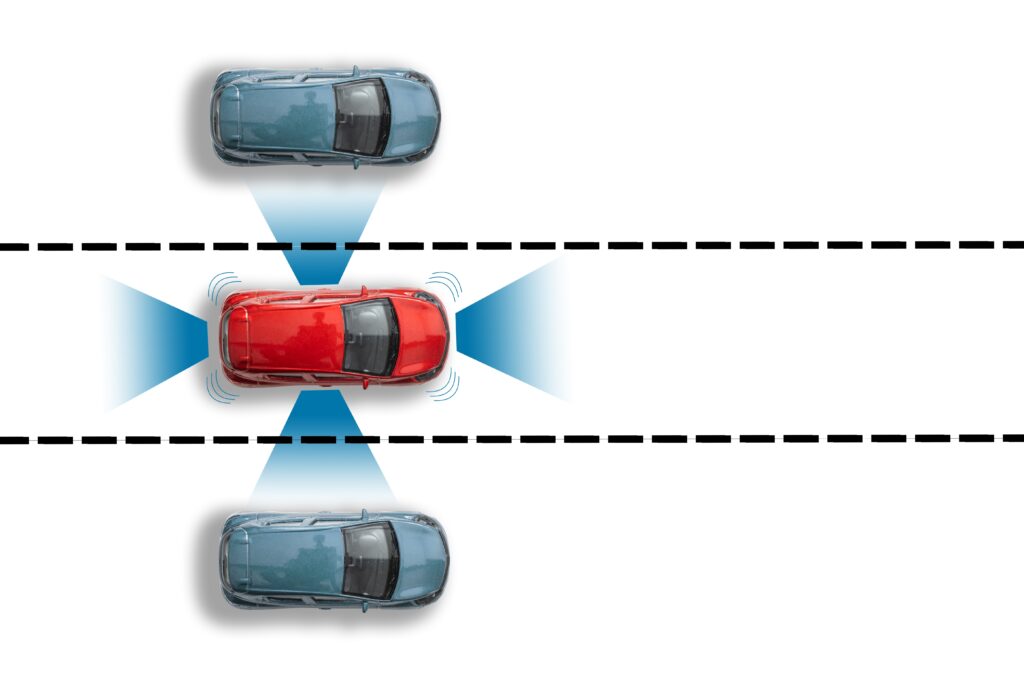Reducing the number and severity of accidents on the road is one of the biggest goals of automakers. As such, many have sought to differentiate their brands by offering a wide range of collision avoidance systems to improve the safety of the driver, their passengers, and all other vehicles on the road. A lane avoidance system is one of the latest developments in highway safety technology and could help you avoid an unfortunate accident. Here are some frequently asked questions about lane departure systems.
What Are Lane Departure Systems?
A lane departure system, also known as a lane departure warning, is a type of collision avoidance system that helps drivers stay in their lane. Some lane departure systems will alert the driver when they are steering out of their lane to allow them to correct themselves, while others will actively steer the vehicle back into its lane. This is an effective highway safety system that can help prevent car and truck accidents by preventing drivers from steering off course.
How Do Lane Departure Systems Work?
Lane departure systems use cameras to keep track of the lane markings on the road. The car will then detect when it is veering off course and alert the driver or take corrective action to keep the car in its lane. This can help avoid accidents with other cars in adjacent lanes and prevent rollovers, which can occur when a vehicle swerves into a curb or roadside shoulder.
Can Lane Departure Systems Prevent Drowsy Driving Accidents?
Lane departure systems cannot prevent drowsy driving, but they can be helpful signals for realizing that you might be too tired to drive. It can be difficult to stay in your lane when you’re too tired to drive, so noticing repeated warnings from your lane departure system could be a sign that you should pull over or take a break.
Some of the top signs of drowsy driving are:
- Drifting from your lane
- Constant yawning
- Trouble keeping your eyes open
- Difficulty remembering the last five minutes
If you think you are too tired to drive, you should pull over as soon as it is safe to do so. Once you’ve pulled over, you may:
- Take a 15-minute break from driving
- Drink a caffeinated beverage
- Take a short walk
- Listen to upbeat music
What Are the Types of Lane Departure Systems?
There are several types of lane departure systems that offer varying levels of driver support. The most common are:
- Lane departure warning (LDW): This system provides visual, audible, or haptic warnings to alert the driver when the car is straying from its lane. The turn signal will temporarily disable these systems from activating, which will allow you to safely switch lanes and make turns. These systems will not interfere with the driving of the car.
- Lane keeping assistance (LKA): This system provides steering support to help the driver stay in their lane. LKA is often used in conjunction with an LDW system to both alert the driver and provide corrective support.
- Lane centering assist (LCA): This system provides continuous support to help the driver stay centered in their lane. A common complaint of this type of system is that it does not allow the driver to move within their lane as it constantly seeks to keep the car in the center of the lane. It can also be used in conjunction with an LDW system.
- Road departure assist: Applies the brakes or steers your car when it detects that you have moved off the road.
Keep in mind that lane departure systems are not meant to be used without driver input. While they provide steering support, they do not purport to be self-driving or autopilot features.
Do Lane Departure Systems Work?
There is ample evidence to support the effectiveness of lane departure systems. A study from the Alabama Transportation Institute at The University of Alabama found that the use of lane departure systems can reduce car crashes. The study found that the adoption of a lane departure system with a 20% effectiveness — that is, the ability to prevent improper lane departure in 20% of the applicable cases — would decrease the number of car crashes by 2.7%. Notably, it found that lane departure systems could achieve a reduction of car crashes of 66.5% if their effectiveness is increased to 100%.
Another study conducted by the Insurance Institute for Highway Safety, a nonprofit highway safety organization, found a favorable outcome for vehicles equipped with lane departure systems. The study found that vehicles with these technologies showed a decrease of 18% in accidents of all severities, 24% in accidents with injuries, and 86% in accidents with fatalities. This makes lane departure systems extremely effective at preventing fatal car accidents.\
What Are Some Limitations of Lane Departure Systems?
Lane departure systems, like all technologies, are not perfect. Here are some of the most common limitations of these systems:
- Does not account for extraneous circumstances: Potholes, cyclists, pedestrians, and objects on the road could cause the driver to temporarily shift out of their lane. Most lane departure systems are unable to identify these situations and recognize the need to steer off course. Systems with corrective driving may cause an accident by forcing the driver to stay in their lane even when there is a potential hazard ahead.
- Warnings can be distracting: Lane departure systems are often triggered in critical moments when the driver is making a maneuver to avoid a collision. The audible or haptic warnings can be distracting at a time when the driver needs the utmost concentration.
- Improper lane markings: Lane departure systems depend on clearly marked lanes on the road, which are not always available. Construction can be particularly problematic for these systems, as temporary markings may trigger the warnings when the driver is following the correct lane.
- Curving roads: Lane departure systems are designed for roads without sharp curves. Since the camera is front-facing, a sharp curve may be difficult for the system to detect. This can cause the lane departure system to be improperly deployed.









